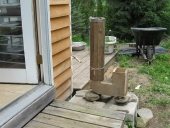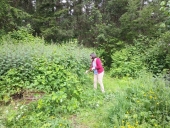
 1
1
















Robin Hones wrote:Measure the troughs not the hills. If you are surveying for swales you can always dig down, but you cant dig "up".




A lot of things come out of nowhere, so look everywhere.








A lot of things come out of nowhere, so look everywhere.




 1
1




A lot of things come out of nowhere, so look everywhere.

















Paul Cereghino- Ecosystem Guild
Maritime Temperate Coniferous Rainforest - Mild Wet Winter, Dry Summer




"People need to start growing their own food again. It will make them self-sufficient and autonomous, which would put an end to the corruption in the food industry." - Sepp Holzer

|
Thanks tiny ad, for helping me escape the terrible comfort of this chair.
Support permies and give beautiful gifts to gardeners: permaculture playing cards.
https://gardener-gift.com/
|



